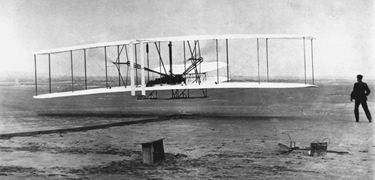

 The Accurate Reloading Forums
The Accurate Reloading Forums  THE ACCURATE RELOADING.COM FORUMS
THE ACCURATE RELOADING.COM FORUMS  Other Topics
Other Topics  Aviation
Aviation  Engine Malfunction In The Denver Area
Engine Malfunction In The Denver AreaGo  | New  | Find  | Notify  | Tools  | Reply  |  |
| one of us |
some how engine pieces and parts coming off and falling to the ground seem to me to be more than a malfunction. Glad it happened close to an airport and glad all made it safely! Had to be a really HEAVY landing weight with all that fuel on board. Don't limit your challenges . . . Challenge your limits | ||
|
| Administrator |
True. Engine caught fire, and the pilot brought it down just fine. Just read a 747 cargo plane lost some bits over Holland too??!! And reports are saying Boeing have asked that all 777 with PW400engine be grounded until further notice. | |||
|
| one of us |
When shit flies apart at 20,000 rpm nothing good comes of it. Lots of shrapnel to rip fuel and oil lines. We've been spoiled. Think of the poor pilots back in the '50s-'60s flying radial piston engines. Fires and engine failures were common.
| |||
|
| One of Us |
I saw the video of what was left of the flaming, badly vibrating engine. Pretty scary. Somebody taking a video for the crash investigation, no doubt. Grizz When the horse has been eliminated, human life may be extended an average of five or more years. James R. Doolitle I think they've been misunderstood. Timothy Tredwell | |||
|
| one of us |
Looking at the vibrating piece of the engine still attached to the pylon, I was surprised that it did not shake itself loose or damage the wing! Great job on the design and cockpit crew. Anyone know anything about the asymmetric power on that particular aircraft when it is down to one enginge like that? Don't limit your challenges . . . Challenge your limits | |||
|
One of Us |
Totally dependent of the phase of flight (airspeed) when the engine is lost. Take off or go around, more of a handful than in cruise. In cruise, not much of a problem at all performance wise. The fire on the other hand ... a significant emergency to say the least ... especially if not extinguished after shutting it down and shooting both bottles. | |||
|
| one of us |
Are there not cutoffs to stop the flow of fuel/oils out to the engine in case of catastrophic failure like this? Don't limit your challenges . . . Challenge your limits | |||
|
One of Us |
Yes there are. Procedure upon receiving a fire warning indication is to look for a secondary confirmation. For instance, fire warning light and bell goes off, look for the engine to roll back, high EGT, fluctuating rpm, etc. Anything out of the ordinary which would indicate the fire warning in legit. Silence the warning, then pull the throttle to idle, fuel cut off lever to off, pull the engine fire handle. The fire handle will shut off fuel to the engine, disconnect the generator, and arm the fire extinguisher. If the fire persists, shoot the fire extinguisher bottle. If it continues, shoot the second bottle. Land the plane!! | |||
|
| One of Us |
Pull the engine fire handle AFTER confirming what engine with the pilot flying | |||
|
One of Us |
DEFINITELY!!! | |||
|
| Administrator |
ALWAYS confirm a faulty sign. It could be nothing but the light. Flew with a man learning to fly on a helicopter - he really had business flying. During ground school he was asking about the various warning signals and what should he do if he sees one. I could not help it, I said “you know that big red switch under the cover - that was the main power switch on the helicopter we were flying - just turn it off!” Our instructor went ballistic! Everyone else just laughed, except the one I mentioned! He never made it as a pilot | |||
|
One of Us |
Yep. No need to shut down a perfectly good engine due to a faulty fire indication. And as Bentaframe corrected my proceedure list, make sure to shut down the faulty engine. Worst thing is to have a fire on one, and shut down the good engine by mistake. | |||
|
| Powered by Social Strata |
| Please Wait. Your request is being processed... |
|
 The Accurate Reloading Forums
The Accurate Reloading Forums  THE ACCURATE RELOADING.COM FORUMS
THE ACCURATE RELOADING.COM FORUMS  Other Topics
Other Topics  Aviation
Aviation  Engine Malfunction In The Denver Area
Engine Malfunction In The Denver Area

Visit our on-line store for AR Memorabilia

